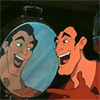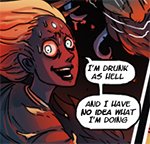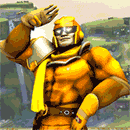|
Welcome goonlings to the Awful Book of the Month! In this thread, we choose one work of Resources: Project Gutenberg - http://www.gutenberg.org - A database of over 17000 books available online. If you can suggest books from here, that'd be the best. SparkNotes - http://www.sparknotes.com/ - A very helpful Cliffnotes-esque site, but much better, in my opinion. If you happen to come in late and need to catch-up, you can get great character/chapter/plot summaries here.  For recommendations on future material, suggestions on how to improve the club, or just a general rant, feel free to PM me. For recommendations on future material, suggestions on how to improve the club, or just a general rant, feel free to PM me.  Past Books of the Month [for BOTM before 2015, refer to archives] 2015: January: Italo Calvino -- Invisible Cities February: Karl Ove Knausgaard -- My Struggle: Book 1. March: Knut Hamsun -- Hunger April: Liu Cixin -- 三体 ( The Three-Body Problem) May: John Steinbeck -- Cannery Row June: Truman Capote -- In Cold Blood (Hiatus) August: Ta-Nehisi Coates -- Between the World and Me September: Wilkie Collins -- The Moonstone October:Seth Dickinson -- The Traitor Baru Cormorant November:Svetlana Alexievich -- Voices from Chernobyl December: Michael Chabon -- Gentlemen of the Road 2016: January: Three Men in a Boat (To say nothing of the Dog!) by Jerome K. Jerome February:The March Up Country (The Anabasis) of Xenophon March: The Name of the Rose by Umberto Eco April: Plain Tales from the Hills by Rudyard Kipling May: Temple of the Golden Pavilion by Yukio Mishima June:The Vegetarian by Han Kang July:Lud-in-the-Mist by Hope Mirrlees August: Pale Fire by Vladimir Nabokov September:Siddhartha by Herman Hesse October:Right Ho, Jeeves by P.G. Wodehouse November:Kitchen Confidential by Anthony Bourdain December: It Can't Happen Here by Sinclair Lewis 2017: January: Mother Night by Kurt Vonnegut February: The Plague by Albert Camus March: The Dispossessed by Ursula K. LeGuin April: The Conference of the Birds (مقامات الطیور) by Farid ud-Din Attar May: I, Claudius by Robert Graves June: Salt: A World History by Mark Kurlansky July: Ficcionies by Jorge Luis Borges August: My Life and Hard Times by James Thurber September: The Peregrine by J.A. Baker October: Blackwater Vol. I: The Flood by Michael McDowell November: Aquarium by David Vann December: Sir Gawaine and the Green Knight [Author Unknown] 2018 January: Njal's Saga [Author Unknown] February: The Sign of the Four by Arthur Conan Doyle March: Lincoln in the Bardo by George Saunders April: Twenty Days of Turin by Giorgio de Maria May: Lectures on Literature by Vladimir Nabokov Current: The Electric Kool-Aid Acid Test by Tom Wolfe Book available here: https://www.amazon.com/Electric-Kool-Aid-Acid-Test/dp/031242759X About the book: quote:Ken Kesey . . . began writing One Flew Over the Cuckoo's Nest in 1960 following the completion of a graduate fellowship in creative writing at Stanford University; the novel was an immediate commercial and critical success when published two years later. During this period, Kesey participated in government studies involving hallucinogenic drugs (including mescaline and LSD) in order to supplement his income.[3] quote:The Electric Kool-Aid Acid Test is a nonfiction book by Tom Wolfe that was published in 1968. The book is remembered today as an early – and arguably the most popular – example of the growing literary style called New Journalism. quote:
(above links from wikipedia) quote:The book is about Ken Kesey, the American writer, author of the highly successful peyote-inspired novel and Broadway play "One Flew Over the Cuckoo's Nest," who while living the successful suburban bohemian life in Stanford, California, volunteered for $75 a day to be an experimental subject for "psychomimetic" drugs and found that LSD made him "see into people." https://www.theguardian.com/theguardian/2014/may/02/tom-wolfe-electric-kool-aid-acid-test quote:The seminal 1968 chronicle of the counterculture is Wolfe’s account of living and traveling with the writer Ken Kesey and his Merry Pranksters, in a day-glo bus equipped with loads of LSD. In today’s Los Angeles, 50 years after the book was published, that metaphorical bus is still rolling, but it looks very different: corporate-sponsored music festivals, luxury cannabis dispensaries, micro-dosing as a productivity hack, Goop-endorsed crystal healing, and the artfully staged Instagrams of #vanlife. https://quartzy.qz.com/1279051/tom-wolfes-electric-kool-aid-acid-test-still-holds-up-50-years-after-its-publication/ About the Author quote:Thomas Kennerly Wolfe Jr. (March 2, 1930[a] – May 14, 2018) was an American author and journalist widely known for his association with New Journalism, a style of news writing and journalism developed in the 1960s and 1970s that incorporated literary techniques. quote:Wolfe also championed what he called “saturation reporting,” a reportorial approach in which the journalist “shadows” and observes the subject over an extended period of time. “To pull it off,” says Wolfe, “you casually have to stay with the people you are writing about for long stretches . . . long enough so that you are actually there when revealing scenes take place in their lives.”[13] Saturation reporting differs from “in-depth” and “investigative” reporting, which involve the direct interviewing of numerous sources and/or the extensive analyzing of external documents relating to the story. Saturation reporting, according to communication professor Richard Kallan, “entails a more complex set of relationships wherein the journalist becomes an involved, more fully reactive witness, no longer distanced and detached from the people and events reported.”[14] quote:Kurt Vonnegut said Wolfe is "the most exciting – or, at least, the most jangling – journalist to appear in some time," and "a genius who will do anything to get attention."[29] Paul Fussell called Wolfe a splendid writer and stated "Reading him is exhilarating not because he makes us hopeful of the human future but because he makes us share the enthusiasm with which he perceives the actual."[30] Critic Dwight Garner praised Wolfe as "a brilliantly gifted social observer and satirist" who "made a fetish of close and often comically slashing detail" and was "unafraid of kicking up at the pretensions of the literary establishment."[31] Critic James Wood disparaged Wolfe’s "big subjects, big people, and yards of flapping exaggeration. No one of average size emerges from his shop; in fact, no real human variety can be found in his fiction, because everyone has the same enormous excitability."[32] quote:
https://www.npr.org/2011/08/12/139383916/tom-wolfe-chronicling-countercultures-acid-test Themes There's a lot to talk about with this one and a lot of directions to go in. Culturally relevant (are the hippies still relevant? is their mythology? should it be?), stylistically revolutionary (is this "journalism" or "literature" ? Both or neither? ), intensely meta-textual (how much correlation is there between the Kesey and Cassady of this book, and the Dean Moriarty of On the Road or the McMurphy of Cuckoo's Nest?). quote:That’s what makes Acid Test such an important book – it’s a perfect meeting of minds. An absolutely modern story of an attempt to find new forms of expression, new forms of living, instigated by the most important prose-writer of his times and written up by the most ground-breaking, experimental journalist working in the country at that moment. Kesey and Wolfe: The Dream Team! https://www.theguardian.com/books/2018/may/17/road-trip-how-tom-wolfes-acid-test-changed-the-way-we-see-the-world quote:It’s easy to feel nostalgic for the simpler world of the counter-culture 1960s. And in the midst of a new “new age”—think Burning Man, post-work sound baths, and weekend ayahuasca retreats—our perception of its cultural precedents is often scrubbed clean, romanticized, and repackaged. https://quartzy.qz.com/1279051/tom-wolfes-electric-kool-aid-acid-test-still-holds-up-50-years-after-its-publication/ Pacing Read as thou wilt is the whole of the law. Please bookmark the thread to encourage discussion. References and Further Reading On the Road by Kerouac and You Can't Win by Jack Black if you want the antecedents of the Beat and Hippie movements; note that Neal Cassady, the fictionalized central figure of On the Road, is also a primary character here. Hunter S. Thompson if you want to explore "New Journalism" further (furthur). Obviously, One Flew Over the Cuckoo's Nest. Final Note: Thanks, and I hope everyone enjoys the book! Hieronymous Alloy fucked around with this message at 15:24 on Jun 6, 2018 |
|
|
|
|

|
| # ? May 2, 2024 00:12 |
|
Just an added resource (though admittedly not a book), but the documentary The Other One spends almost half of its run-time exploring the events of this book from Bob Weir's ( rhythm guitarist for the Grateful Dead) perspective, with footage of the Merry Pranksters, their celebrations, and Neil Cassidy's insane bus-driving. There's a great scene where Weir treads lightly in trying to explain Neil Cassidy to his teenage daughters.
|
|
|
|
I guess this one isn't proving as popular as I'd hoped. I suspect people may be reluctant to read what sounds like Yet Another Boomer Retrospective, but I really do think this is a book worth reading. mostly as a case study in sociology -- it's not often that mass popular movements can be traced back to specific beginnings, and even rarer that a journalist of Wolfe's talent is on hand at the start to document it.
|
|
|
|
|
I finished it a few days ago, I'm just bad about posting in these threads. It's also a great example of the New Journalism. But tbh it got so tedious by the end, it's no wonder Kesey retired to a quiet life on a farm for the rest of his life, because the whole thing just got so tired. And it's funny how it was already that way before the 60s even ended. Also, the historical postscript for the book should be "How a bunch of assholes ruined psychedelic theraputics for over 50 years."
|
|
|
|
Hieronymous Alloy posted:people may be reluctant to read what sounds like Yet Another Boomer Retrospective *Ding ding ding* Also every other thing I've read by Wolfe feels like some hack freshman comp emulating New Journalism. I know that's cart before horse but I hate his style so much.
|
|
|
|
Hey already read this and posted my review in the vote thread vOv
|
|
|
|
AlsoStuporstar posted:Also, the historical postscript for the book should be "How a bunch of assholes ruined psychedelic theraputics for over 50 years."
|
|
|
|
|
poisonpill posted:*Ding ding ding* Tbh, while I liked The Right Stuff (despite a few how-could-he-really-have-known-that? reservations), the more I read about Wolfe, the more I dislike and distrust him. The stuff about Wolfe's PhD dissertation in this article comes to mind. The Vanity Fair article mentions it to portray Wolfe as a mischievous iconoclast in conflict with the stodgy fellow-traveler-of-fellow-travelers professors, and I can't say I have much sympathy for the professors, but the article still makes clear that Wolfe was guilty of some pretty serious dishonesty. Vanity Fair posted:To top it all off … he’d taken some license with the details. One outraged reviewer compared Wolfe’s text with his cited sources and attached the comparison. Sample Wolfe passage: “At one point ‘the Cuban delegation’ tramped in. It was led by a fierce young woman named Lola de la Torriente. With her bobbed hair, leather jacket, and flat-heeled shoes, she looked as though she had just left the barricades. Apparently she had. ‘This is where our literature is being built,’ exclaimed she, ‘on the barricades!’ ” Huffed the reviewer: “There is no description of her in the source, and the quotations do not appear in the reference.”
|
|
|
|
It's Warlock time. Thread will go up tomorrow.
|
|
|
|
|
*put on cloak and wizard's hat*
|
|
|
|
|

|
| # ? May 2, 2024 00:12 |
|
Hieronymous Alloy posted:It's Warlock time. Thread will go up tomorrow. Nice, the hold just came in today, perfect timing. Bilirubin posted:*put on cloak and wizard's hat* lmao
|
|
|
















